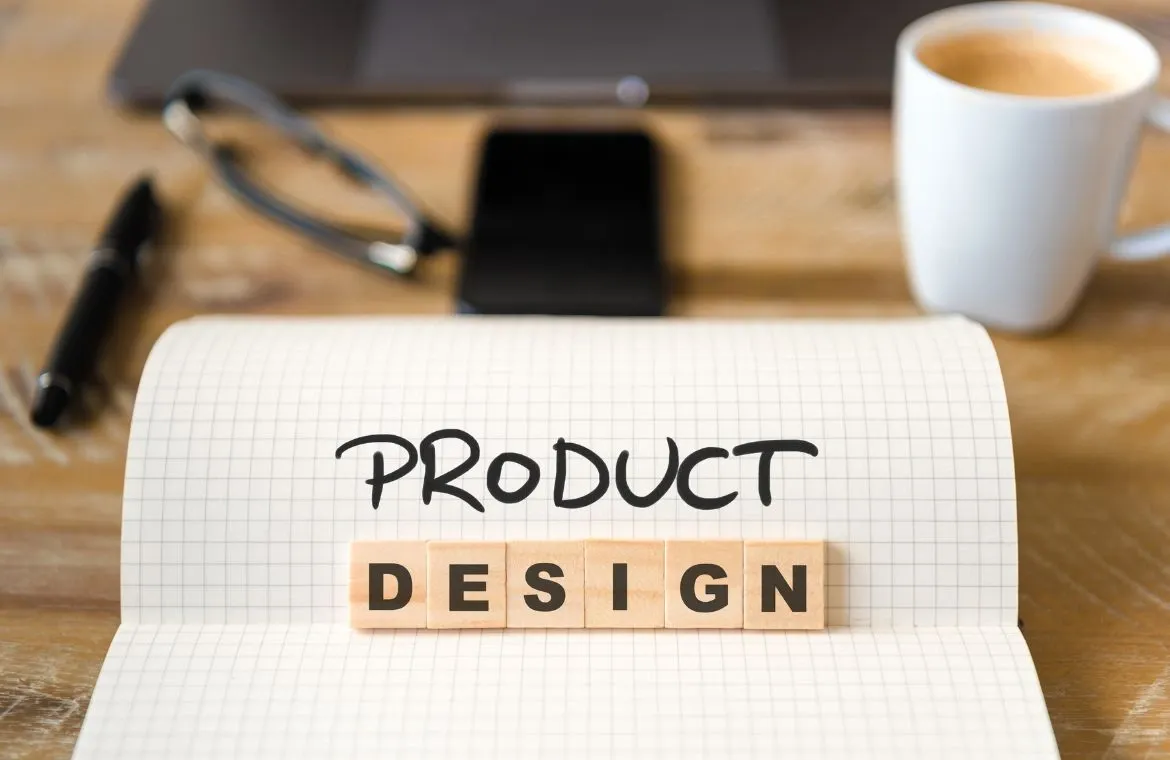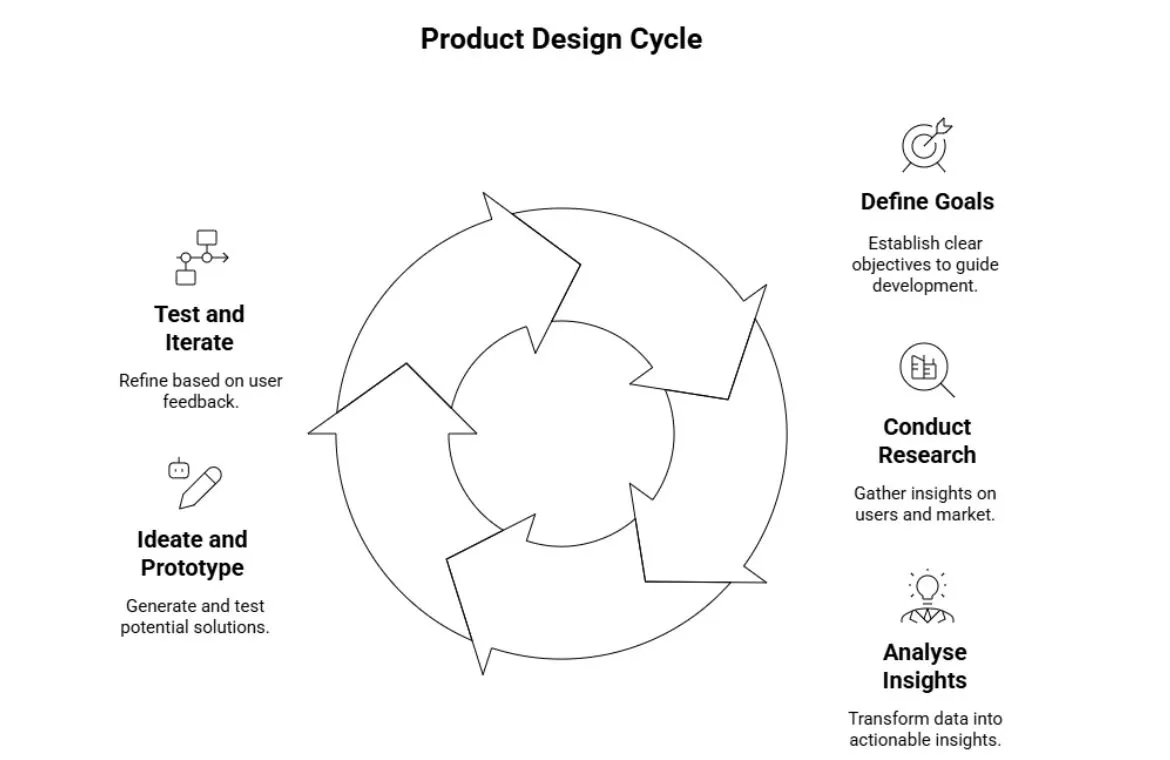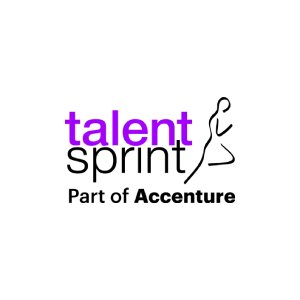What is Product Design? From Sketch to Success Story

Product design transforms ideas into successful products by finding the right balance between looks, function, and user experience. Great products don't just happen - they come from careful planning that leads to happier customers, better sales, and higher profits.
Product design is like building a bridge which connects an idea in someone’s mind to something useful in someone else’s hands. Think about the smooth design of an iPhone or the comfort of an Ola electric scooter. Every product begins with a sketch, but it becomes a reality only when it’s designed with the user in mind.
“Leaders imagine it, teams create it, and users decide if it works”.
What do you mean by Product Design?
Product design is the systematic process that creates new products to solve specific problems or meet market needs. This field brings together art, science, and technology to transform ideas into tangible inventions and products.
For example, boAt revolutionised India’s personal audio market. Their earphones weren’t just tech, they were style statements grown from user desires.
The product design process starts from ideation and ends at commercialisation. It goes through multiple stages where concepts are evaluated and refined. While people once linked it mainly to physical products, the scope now covers digital products like software and applications. Designers work throughout the product's lifecycle to balance functionality, aesthetics, usability, and business requirements.
Difference between product design and UX design
People often mix up product design and UX design, but these roles have different focuses. The main differences are:
- Product designers handle broader tasks, including business goals, market viability, and technical feasibility along with user experience
- UX designers excel at optimising user interactions and making products usable
- Product designers lead the entire design process, while UX designers work on specific design elements.
Also Read: What is Visual Design? The Silent Engine of User Experience
What makes a good product design?
A good product design needs several vital features.
- Functionality comes first as the product should be capable to do their job well and reliably.
- Usability helps users understand and operate products naturally without reading too many instructions.
- Aesthetics create emotional bonds with users and strengthen brand messages.
- Simplicity reduces learning curves and helps avoid mistakes.
A well-designed product works well, looks good, and meets both business goals and market needs.
The Evolution of Product Design
The rise of product design tells a remarkable story from industrial craftsmanship to state-of-the-art technology. These changes mirror the technological and social shifts that have revolutionised how we create, develop, and launch products.
Industrial design roots
Product design emerged in 18th-century Britain with mass production. Key milestones include Christopher Dresser’s work, the 1907 Werkbund, and Bauhaus in 1919, all blending function, aesthetics, and industrial efficiency.
Digital transformation and software products
In the late 20th century, digital tools like CAD transformed product design. Pioneers like Hanratty (PRONTO, 1957) and Sutherland (SKETCHPAD, 1963) enabled the shift from 2D drafts to 3D models, improving accuracy, simulation, and efficiency in product development.
Modern product design in agile environments
Modern design teams work across different functions. Designers now take part in development processes. This collaborative approach makes sure that:
- Design choices line up with technical possibilities and limits
- Visual and interaction design grows step by step with software architecture
- User feedback drives continuous product improvements
DevOps helps connect development and operations. This streamlines software delivery and turns designs into working products. The focus has moved from just looks to complete user experiences. These balance business goals with customer happiness.
What is the Importance of Product Design?
Good product design helps businesses succeed by making products that work well and look great. Companies with strong design teams perform better than their competitors. They achieve much higher revenue.
Aligning user needs with business goals
Product design connects what users want with what businesses need. The best product designers don't just focus on user experience. They look for significant areas where customer needs match business goals. This balanced approach makes customers happy and helps businesses grow. Product designers can prove their worth by connecting design metrics to business results.
Driving innovation and differentiation
Product design sets companies apart in competitive markets. Great product design creates chances to reach new markets. Smart design helps companies adapt as customer needs change and reach new groups of buyers. Of course, this approach to product development builds stronger brands and boosts performance across markets.
Enhancing user experience and satisfaction
The biggest benefit of great product design is happy users. Products that solve real problems and are easy to use create emotional bonds with customers. Users come back to businesses with well-designed products, which helps increase revenue.
Smart design means products need less customer support. This cuts costs and keeps customers loyal.
The step-by-step process for product design.

Product development works best when it follows a well-laid-out method that turns ideas into market-ready solutions. The product design process provides teams with a framework to achieve consistent results through five key stages.
Step 1: Define goals and objectives
Clear product goals guide development and help arrange the vision with execution. Good goals answer three simple questions: what you want to achieve, how it helps business goals, and what success looks like with measurable results. Teams might work on features that don't help the bigger picture without clear goals. This wastes effort on mismatched projects. Strong goals become your compass for making decisions and connect your product's vision to customer's needs.
Step 2: Conduct user and market research
A full picture becomes the backbone of smart design decisions. Teams gather information about the market, target audience, and competition to understand user needs. They track behaviours, ask questions, and look at data. Research answers basic questions about who will use the product, what competitors offer, and what users expect. Designers use many tools like interviews, surveys, field studies, and competitive analysis to get a detailed view of the problem space.
Step 3: Analyse insights and define problems
The analysis phase turns collected data into useful insights. Designers blend research findings to spot patterns and create clear problem statements. A good problem statement focuses on people, gives room for creativity, but stays focused enough to handle. The core team uses tools like empathy maps and affinity diagrams. These help group information and link different pieces together as they move from analysis to synthesis.
Step 4: Ideate and prototype
Teams generate different solutions through brainstorming sessions. Mind mapping, sketching, and SCAMPER help spark creativity and explore new viewpoints. Prototyping then brings these ideas to life for testing. Teams can create anything from simple sketches to detailed digital mockups. Each type of prototype serves a different purpose in the design process.
Step 5: Test, iterate, and launch
Testing prototypes with real users is vital to gather feedback and make improvements. Whatever a concept looks like on paper, user testing shows practical limits and chances to improve. Teams keep refining based on user feedback until the product meets its goals. The cycle of testing and improving continues even after the original launch. This ensures the product grows with changing market needs.
Challenges and solutions in product design
Product designers face complex challenges that can derail even the most promising designs. Success depends on mastering three critical balancing acts. These acts help create meaningful breakthroughs in the field.
1. Balancing business and user needs
Business goals and user needs often create tension in the design process. Teams don't deliberately ignore users, but this happens when they assume they know what users want without proper research. The path to success starts with clear objectives based on thorough user research and explicit business goals.
Smart designers set priorities that help departments work together to meet customer needs. The secret lies in finding where business objectives and user needs meet. This creates designs that work for both sides without compromise.
2. Designing for accessibility
Products should work well for people with different abilities and disabilities. Users need to see, understand, direct, and interact with products fairly. Here's what designing for accessibility means:
- Setting proper colour contrast
- Including visual cues and clear labels beyond colour indicators
- Creating logical information hierarchies with distinctive groups
- Using descriptive, non-ambiguous calls to action
- Ensuring touch targets meet minimum size requirements
Accessibility does more than just meet requirements. It makes coding practises better and helps more people use your business's tools.
3. Integrating and applying user feedback
User feedback offers great ways to learn about real-life interactions.
Teams need strong criteria to rank feedback because they can't implement everything. When looking at feedback, consider: "Does this benefit multiple users? Does it fit our product strategy and business goals? Will it make the user experience better?"
The core task is turning useful feedback into applicable information by finding patterns that shape product development choices.
Careers and tools in product design
Product design careers are diverse and exciting. Professionals in this field use specialised tools to transform concepts into successful products. The journey from establishing product requirements to creating user interfaces needs specific skills and technical resources.
Types of jobs in product design
The product design industry includes many career paths that match different interests and skill levels. Product designers create new products with a focus on functionality, aesthetics, and user experience.
The field also has unique roles like colour technologists, exhibition designers, and textile design specialists, CAD technicians, Design Engineers and Product managers, who work on specific aspects.
Top tools used by product designers
Designers need specialised software to bring their vision to life. Figma helps teams design interfaces together. Adobe XD powers UI/UX development, while Sketch excels at digital design work. Tools like Miro and Asana make shared work easier by helping designers show concepts and manage projects.
Hotjar is a great way to get insights through heatmaps and analytics. IconJar helps designers organise their icon collections. Platforms like Webflow and Bubble let designers create responsive websites without coding knowledge.
Skills needed to succeed in product design
Product design success comes from a mix of technical and people skills. Knowledge of computer coding languages, such as C++, CSS, and JavaScript, creates the foundation for digital product development. Visual design helps create appealing prototypes. UI/UX design skills ensure that products not only look good but also work well.
Strong critical thinking enables designers to explore ideas and effectively solve user problems. Good communication skills help understand client needs. Team players collaborate better with colleagues. Most importantly, creativity and empathy help designers create innovative products that strike a chord with users.
Conclusion
Product design plays a crucial role in transforming abstract concepts into tangible innovations. A good product design strikes a perfect balance between aesthetics, functionality, and user experience.
These elements help build solutions that appeal to customers and advance business goals. The path from initial sketch to a successful outcome follows a well-defined method that yields steady results. As industries evolve and user needs become more complex, the demand for skilled product designers has never been higher.
For those inspired to be part of this evolving field, an Advanced Certification Programme in Product Design, Development, and Management can be a real game changer. It goes beyond surface-level skills to equip you with a comprehensive understanding of the design process, from ideation and prototyping to business strategy and market fit.
"Good products solve problems. Great designers see the problem before it even exists."
Frequently Asked Questions
Q1. What do you mean by product design?
Product design is the strategic process of creating new products or improving existing ones to meet user needs and business goals. It involves balancing aesthetics, functionality, and user experience through research, ideation, prototyping, and testing.
Q2. How does product design differ from UX design?
While product design takes a holistic approach considering business goals and market viability, UX design focuses primarily on user interactions and usability. Product designers oversee the entire development process, whereas UX designers specialise in optimising specific user experiences.
Q3. What are the key stages in the product design process?
The product design process typically involves five main stages: defining goals and objectives, conducting user and market research, analysing insights and defining problems, ideating and prototyping solutions, and finally testing, iterating, and launching the product.

TalentSprint
TalentSprint is a leading deep-tech education company. It partners with esteemed academic institutions and global corporations to offer advanced learning programs in deep-tech, management, and emerging technologies. Known for its high-impact programs co-created with think tanks and experts, TalentSprint blends academic expertise with practical industry experience.



